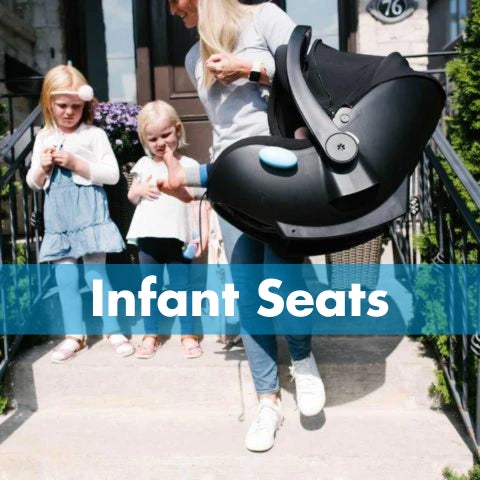Nous y sommes allés :
Votre petit bout de chou approche de son deuxième anniversaire. Vous êtes à une réunion de famille, et un proche bien intentionné jette un coup d'œil dans votre voiture et vous demande : « Ne serait-il pas temps de tourner ce siège pour qu'il puisse voir ? »
Et nous le comprenons. La pression est bien réelle.
Pendant des décennies, la règle générale était de tourner un enfant face à la route le plus tôt possible. C'était perçu comme un rite de passage, une épreuve pour devenir un « grand enfant ».
Mais nous allons vous révéler un secret crucial : ce vieux conseil est dangereusement obsolète.
En fait, l'un des choix les plus importants que vous puissiez faire pour protéger votre enfant en voiture est de le maintenir dans un siège auto dos à la route aussi longtemps que possible.
Il ne s'agit pas d'une simple opinion ; c'est un fait physique. Le comprendre vous permettra de résister sereinement aux pressions et de faire le choix le plus sûr pour votre famille.

La science de la sécurité : une leçon d'anatomie pour les tout-petits
Parlons de votre enfant en bas âge.
Leur tête est proportionnellement beaucoup plus grosse et plus lourde que celle d'un adulte, représentant environ 25 % de leur poids corporel total. Parallèlement, leur colonne vertébrale et les ligaments qui la relient sont encore en développement et sont très souples et élastiques.
Imaginons maintenant la physique du type de collision le plus courant : un impact frontal.
Lorsqu'un enfant est installé face à la route , son corps est maintenu par le harnais à cinq points, mais sa tête, plus lourde, n'est pas retenue. Elle est violemment projetée vers l'avant. Ce mouvement exerce une force considérable sur son cou et sa moelle épinière, encore fragiles et en développement. Le risque de lésions cérébrales et médullaires graves est tragiquement élevé.
Maintenant, revenons en arrière et imaginons ce même accident avec un enfant assis dos à la route .

Dans un siège auto dos à la route, l'enfant est parfaitement maintenu. Sa tête, son cou et sa colonne vertébrale sont soutenus par la coque du siège, formant un ensemble harmonieux. Les forces d'impact sont absorbées par le siège et réparties uniformément sur tout son dos, la partie la plus robuste de son corps.
Le siège fait office de cocon protecteur.
La différence est frappante et les études sont formelles : voyager dos à la route est beaucoup plus sûr pour les enfants de moins de deux ans, et les avantages en matière de sécurité se prolongent bien au-delà. C’est pourquoi les principales organisations de sécurité, comme l’ Académie américaine de pédiatrie (AAP) et Transports Canada , recommandent de maintenir les enfants dos à la route aussi longtemps que possible, jusqu’à ce qu’ils atteignent la taille ou le poids maximum autorisé par leur siège auto convertible.
Voyez la différence par vous-même
Voici un extrait vidéo d'un véritable crash test, démontrant les forces subies par un enfant assis face à la route (ci-dessus) et un enfant assis dos à la route (ci-dessous) :

Démystifier les 3 principaux mythes concernant les sièges auto dos à la route
En tant que fabricant, nous entendons chaque jour les mêmes préoccupations de la part des parents. Abordons-les de front.
- « Mais leurs jambes, alors ? Elles ne vont pas être mal à l'aise ? » C'est le mythe numéro un. Regardez comment les tout-petits s'assoient par terre : ils se contorsionnent dans des positions qui enverraient la plupart des adultes chez le chiropraticien. Ils sont parfaitement contents de croiser les jambes (« jambes croisées »), de les caler contre le dossier du siège ou de les laisser pendre sur les côtés. Plus important encore, dans le cas improbable d'un accident, une blessure à la jambe se soigne. Une lésion de la moelle épinière, elle, ne se soigne pas. Il faut toujours protéger en priorité la tête, le cou et la colonne vertébrale.
- « Ils s'ennuient ! Ils veulent voir où ils vont. » Un enfant installé dos à la route bénéficie d'une vue panoramique exceptionnelle par les vitres latérales et arrière : c'est la seule vue qu'il connaisse ! Il peut voir les arbres, les bâtiments et les nuages défiler. Ce qu'il ne voit pas, c'est l'arrière de votre appuie-tête, et c'est un petit prix à payer pour un gain de sécurité considérable.
- « La loi m'autorise à les retourner à deux ans. » N'oubliez pas : les minimums légaux ne constituent pas une pratique optimale. La loi représente le seuil de sécurité absolu, et non le maximum. Votre objectif ne devrait pas être de respecter les exigences minimales, mais d'assurer une protection maximale.
La solution Clek : conçue pour une utilisation prolongée dos à la route
Alors, comment faire pour que votre enfant reste dos à la route plus longtemps ? Commencez par utiliser un siège auto spécialement conçu à cet effet.
C’est là que les sièges auto convertibles de Clek, le Foonf et le Fllo , excellent. Conçus non seulement pour répondre aux normes, mais aussi pour les surpasser, ils permettent aux enfants de voyager dos à la route jusqu’à leur quatrième, voire cinquième anniversaire.
Voici comment ils rendent possible le transport prolongé dos à la route pour les familles :
- Limites de poids et de taille inégalées : Les sièges Foonf et Fllo permettent une installation dos à la route jusqu’à 22,7 kg (50 lb). Grâce à ces limites élevées, un enfant de taille moyenne peut rester dans la position la plus sûre possible pendant des années, et non seulement des mois, après son deuxième anniversaire.
- Barre anti-rebond (ARB) : Chaque siège auto Foonf and Fllo est livré avec une barre anti-rebond en acier. Installée dos à la route, cette barre appuie contre le dossier du siège du véhicule. En cas de collision, elle empêche le siège de rebondir ou de se retourner, absorbant l’énergie et assurant la stabilité de votre enfant. Un dispositif simple qui améliore considérablement la stabilité et la sécurité.
- Conçus pour s'adapter : Nous savons que l'espace à l'arrière est précieux. Avec moins de 43 cm de large, les sièges Foonf et Fllo sont réputés pour leur design étroit. Ils s'installent ainsi plus facilement dans les petites voitures, et il est même possible d'en installer trois côte à côte. Vous n'aurez donc pas à sacrifier la sécurité pour l'espace, même avec une famille qui s'agrandit.
- Une base de robustesse : Ces sièges sont construits autour d’une structure en acier ultra-résistante. Associée à des couches de mousse absorbant l’énergie ( et non de polystyrène), elle forme une véritable forteresse protectrice conçue pour résister aux forces colossales d’un impact.
Choisir de garder son enfant dos à la route après son deuxième anniversaire est une décision parentale qui rapporte d'énormes bénéfices en matière de sécurité. Il s'agit d'ignorer les idées reçues et de se fier aux données scientifiques.
Avec un siège auto comme le Clek Foonf ou le Fllo , vous disposez de la technologie et des moyens nécessaires pour faire ce choix facilement. Vous n'achetez pas seulement un siège auto ; vous gagnez du temps : plus de temps pour que votre enfant grandisse et s'épanouisse dans un environnement aussi sûr que possible sur la route.
Et c'est une étape importante qui mérite d'être célébrée.
-Clek





